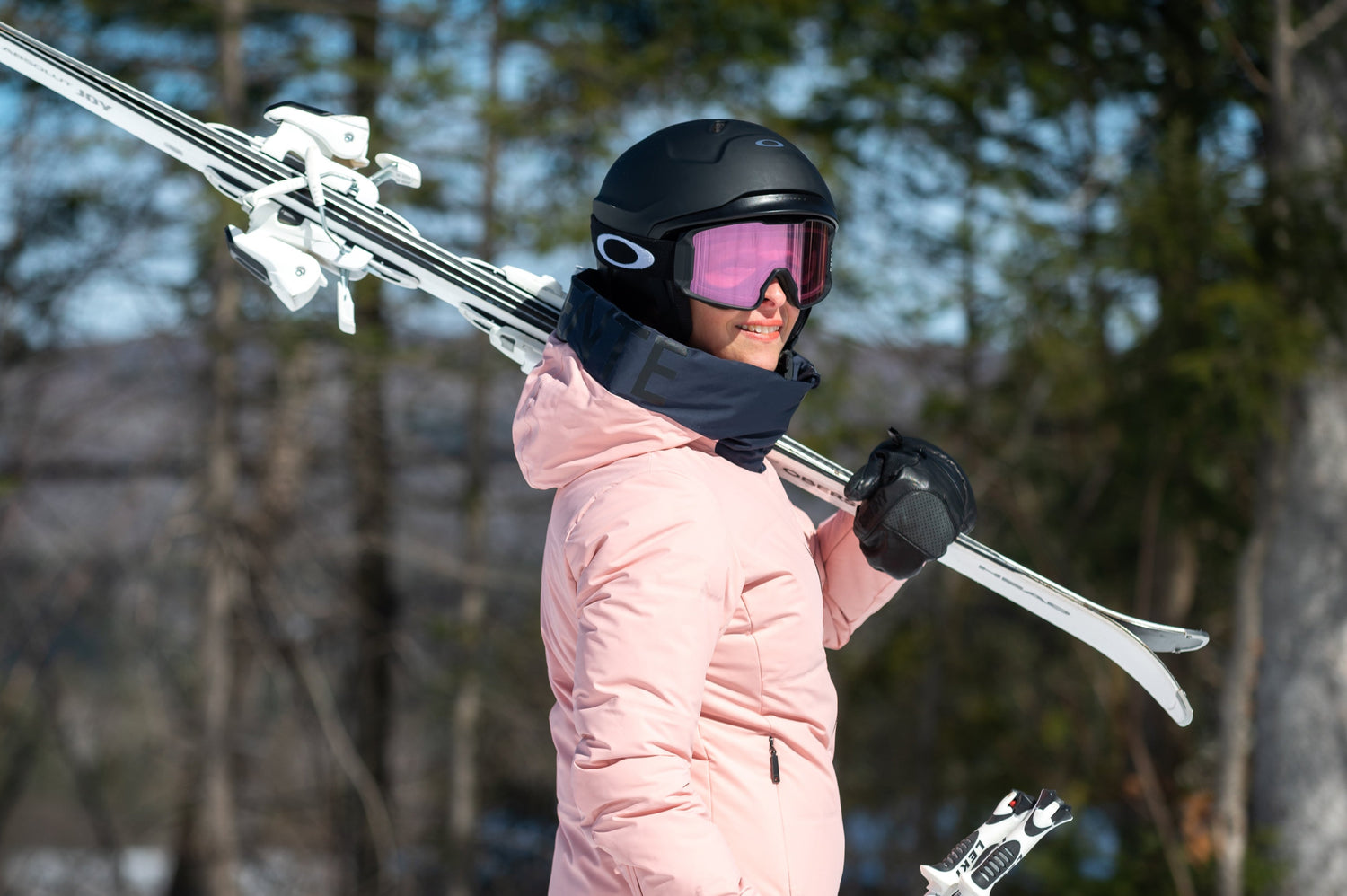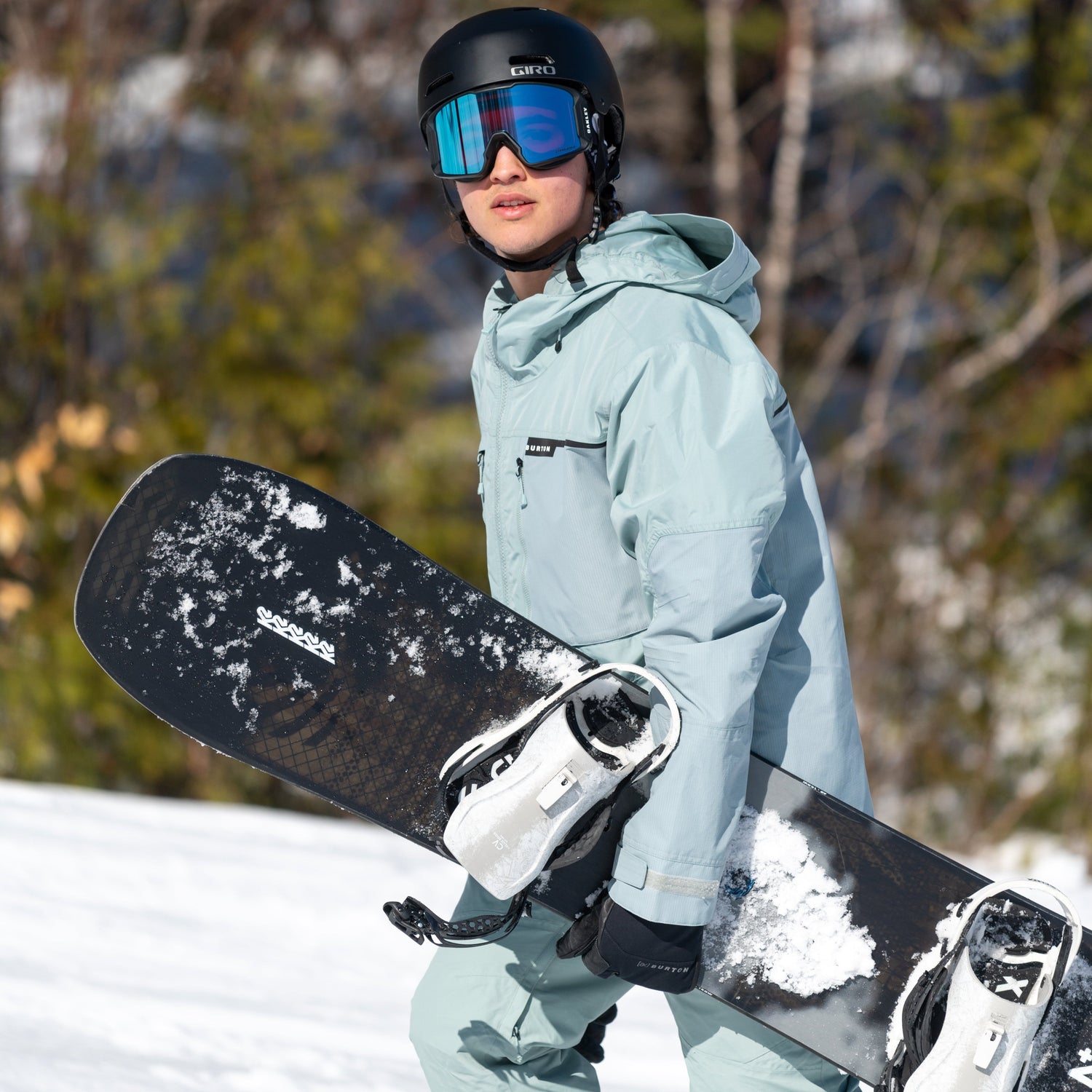1. Why wear a base layer?
What’s the purpose of a base layer? It’s your foundation. Its main job is to keep you dry by wicking away moisture. That’s why it’s important to choose the type of base layer according to your sport. Although their mission is the same, synthetic fibres and merino wool—the materials most base layers are made from—have different characteristics.

2. Which fabric to choose for your base layer?
Base layers are made from natural fibres, such as merino wool, or synthetics, for example polyester. However, cotton should be avoided: it’s great for lounging at home, but because this fabric can absorb up to 27 times its weight in moisture, it can dangerously chill you during outdoor activities. As for synthetic or natural fibres, each material has specific technical characteristics that make it a good candidate for a particular outdoor activity. In addition, both types of materials can be combined in a base layer to offer each one’s advantages.
Why choose a merino wool base layer?
Merino wool has several desirable qualities. Unlike traditional wool, merino wool is made of ultra-fine fibres that aren’t itchy against your skin. As a natural material, it will appeal to those who prefer buying eco-friendly clothing. In addition, it regulates body temperature, meaning it keeps you warm or cool depending on the conditions. There are various densities of merino wool, which are represented by a number indicating the grams of wool per square metre. The higher the number, the warmer and better adapted it is for frigid temperatures or low-intensity activities.
Advantages of Merino Wool
- Temperature regulation
- Naturally soft to the touch
- Anti-odour
- Retains its thermal properties even when wet
- Durability
- Natural fibre
- Eco-friendly (biodegradable)
- Soft and comfortable
Disadvantages of Merino Wool
- More expensive
- Dries slowly

Why choose a synthetic base layer?
Synthetics, such as nylon, polyester and elastane, to name a few, have outstanding moisture-wicking properties. They dry out very quickly, which makes them comfortable during high-intensity activities. Although they don’t provide much insulation, they’re an excellent option for high-intensity cardiovascular activities.
Advantages of Synthetic Fabrics
-
Quick drying
-
Fast moisture wicking
-
Very light
Disadvantages of Synthetic Fabrics
-
Absorb odours
-
Provide little insulation
What's a hybrid base layer?
The two types of materials can be combined to provide each one’s technical properties. Helly Hansen Lifa Merino base layers are outstanding examples of this design, with synthetics worn directly on the skin and merino wool as an outer layer. They keep you dry while regulating body temperature and reducing odours.

3. How to choose a base layer based on your sport?
The base layer you choose depends on your sport’s intensity level. If you do several activities and don’t want to buy more than one, you should think about your most frequent sport.
For higher-intensity, more cardiovascular sports, synthetic fibre is an excellent choice. This type of base layer is perfect for alpine touring, running and cross-country skiing.
As far as merino wool goes, its ability to retain maximum heat makes it ideal for anyone who gets cold quickly or for lower-intensity activities. Merino wool base layers are a great choice for downhill skiing and walking. Many people prefer lightweight merino wool for alpine touring because it keeps them warmer during transitions—especially those that turn into long gab sessions. Its anti-odour properties also make it the go-to choice for multi-day hut trips or for heading straight to après-ski after a big day on the slopes.
Blended base layers work well for all types of activities. Go with a lower merino wool density for more intense sports and vice versa. Remember that everyone is different—some sweat more profusely than others, get cold faster, and so on. You’ll eventually find the winning combinations for your summer and winter sports.
Need advice for your alpine ski clothing? Find out what to wear for alpine skiing.
4. How to choose a base layer based on the weather?
Even if you’re heading out on a touring or cross-country ski trip, don’t underestimate the temperature outside. Sometimes, even if the sport is very active, the weather can be just as frigid. In that case, select a merino wool base layer or choose mid layers with good insulating properties.
Are you interested in dressing in layers? Check out How to Dress for Ski Touring.
Want to dive deeper into choosing the right layers? Read our article "Resort Skiing versus Touring: Choosing the Right Clothes."

5. How should a base layer fit?
For the base layer to truly be your foundation, it should be close-fitting. It won’t be as effective if it’s too roomy. In addition, for the lower body base layer, a 3/4 fit combined with longer socks is ideal for winter sports. Your pants shouldn’t be in your boot to avoid creating unnecessary pressure points on your calves and cutting off your circulation.
6. How to take care of base layers?
Base layers’ lifespans depend on the maintenance you do. The secret to keeping them as long as possible? Machine wash them in a delicate cycle with cool water. Use a mild, unscented or specialized soap for technical base layers, such as Grangers cleaning products. You should also definitely avoid putting them in the dryer. The fibres could shrink and lose their technical properties and therefore their effectiveness.
In short, although there are many types on the market, the best approach is to try more than one to find the base layer that works for you. Think about your needs according to the sport or sports and their intensity levels. Choosing a good base layer is the foundation of your comfort.
Base Layers FAQ
What’s the best material for a base layer in winter?
Merino wool is often considered the best option for winter activities because it stays warm even when damp and soft and comfortable against the skin. On the other hand, synthetic fibres can be a good option for high-intensity sports since they dry quickly.
How do you choose a base layer based on your activity?
For intensive cardiovascular activities, such as cross-country skiing or running, go with synthetic fabrics that wick moisture more efficiently. For downhill skiing, merino wool is an excellent choice thanks to its warmth and comfort. Hybrid blends are a versatile option for those who are into different types of winter sports.
Can you machine-wash merino wool?
Yes, but use cold water, a gentle cycle, and a mild, fragrance-free detergent. Avoid the dryer—heat can damage the fibres and reduce the garment’s performance.
Are you unsure about choosing a base layer for kids? Check out our article Choosing Kids’ Winter Clothing.




